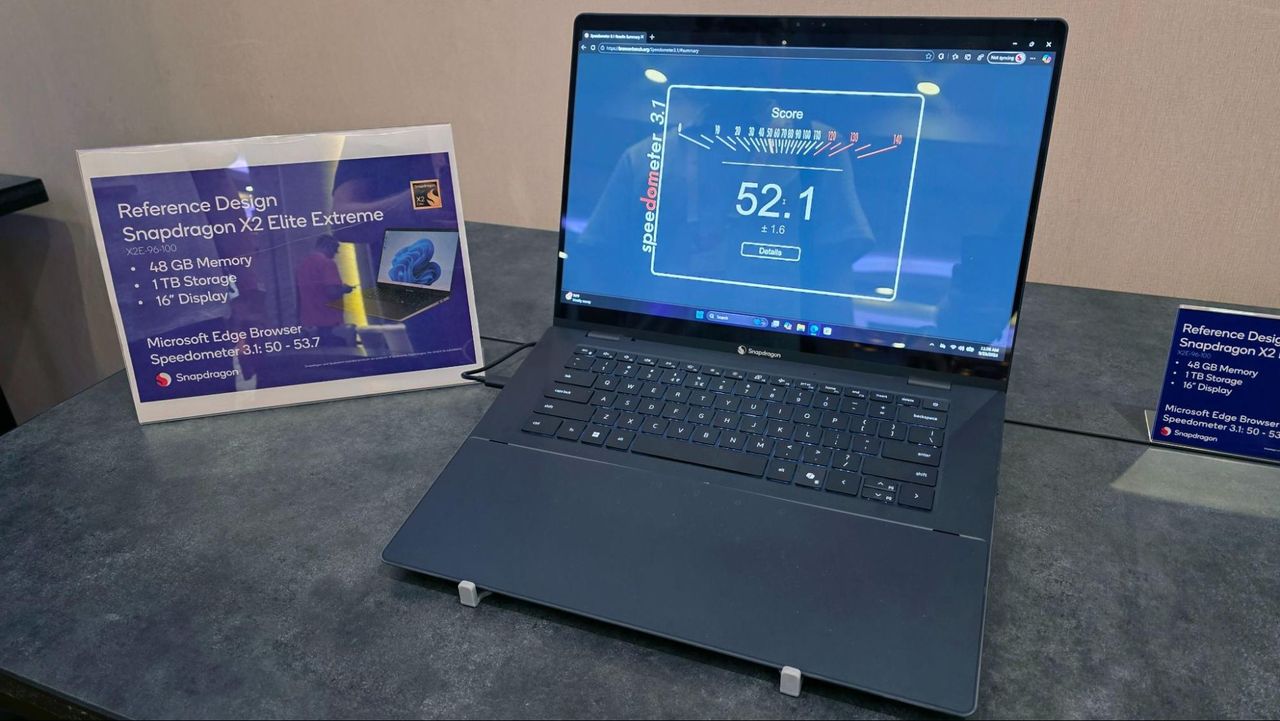
Last week, Qualcomm announced its upcoming Snapdragon X2 Elite and X2 Elite Extreme chips for laptops and compact desktops at its yearly summit in Maui. Some specs were revealed (the top-end Extreme model will pack 18 cores and a top clock speed of 5 GHz on two cores), and the company made lofty promises of up to 31% better performance while sipping 43% less power than its first-gen Snapdragon X silicon. But it didn’t showcase any benchmark numbers or back up those claims – until now.
We were at the event and able to run some tests ourselves on the company’s slim reference design laptop. The conditions were controlled in the sense that the systems were set up by Qualcomm, with the benchmarks pre-installed, and we couldn’t install any software ourselves.
Basically, we could click a benchmark and watch it run ourselves to retrieve numbers, and a couple of stations were set up showcasing typical results that were retrieved earlier. The results we saw were in the range of the results Qualcomm’s slide deck results, below.
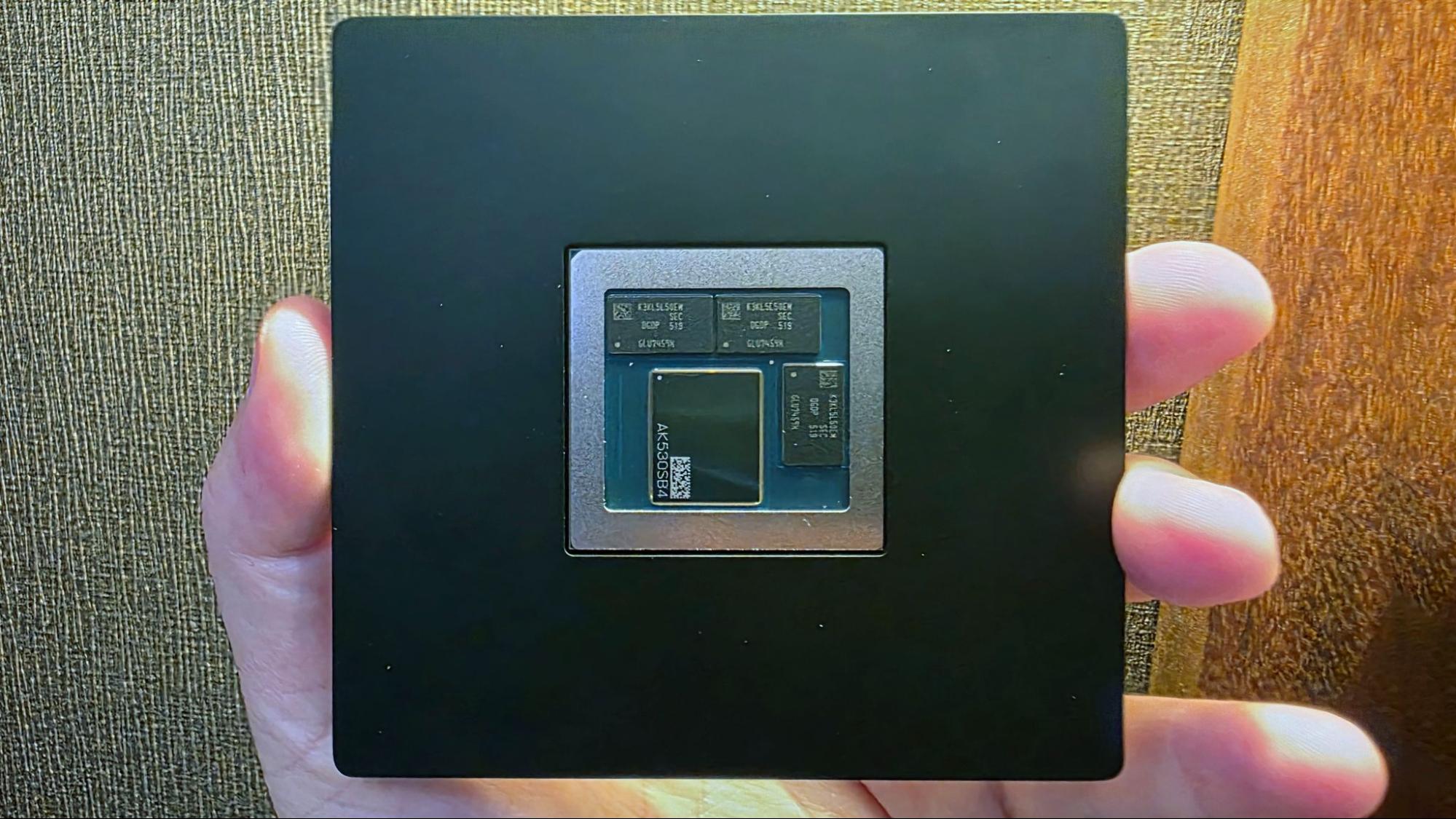
This is obviously far from an ideal way to judge performance. But numbers taken from reference systems should generally be taken with a few grains of salt anyway, because the performance of final retail devices will vary based on a system’s cooling, as well as how the chip is configured to run for a given chassis or form factor.
So keep in mind that these are very early numbers that came from only the top-end chip tested in a reference design, and may be competing against chips that will no longer be the latest and greatest when Snapdragon X2 systems ship, which Qualcomm says will be in the first half of next year.
The X2 Elite Extreme test system
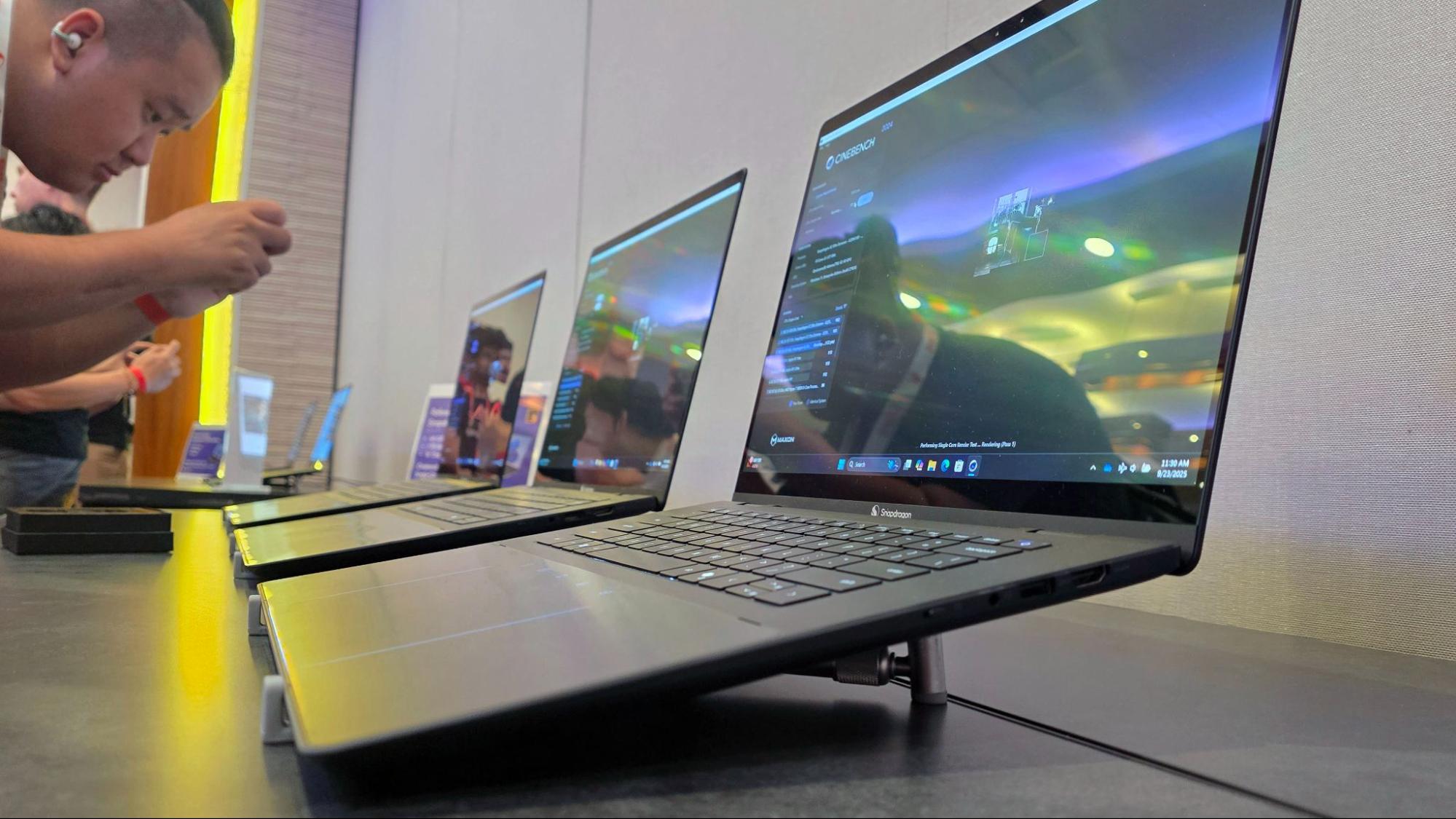
As for the reference system used for testing, it’s a slim 16-inch laptop that Qualcomm says is equipped with 1TB of storage, and the chip packs 48GB of LPDDR5X-9523 RAM on a wide 192-bit bus. Doubtlessly, that helps boost the scores in several of the benchmarks below – especially graphics performance. But we’ll likely have to wait quite a while to see how that impacts battery life over the more typical 128-bit bus of the non-extreme X2 Elite SoCs.
All that said, though, it’s hard to argue that these numbers are anything but impressive.
Early test results
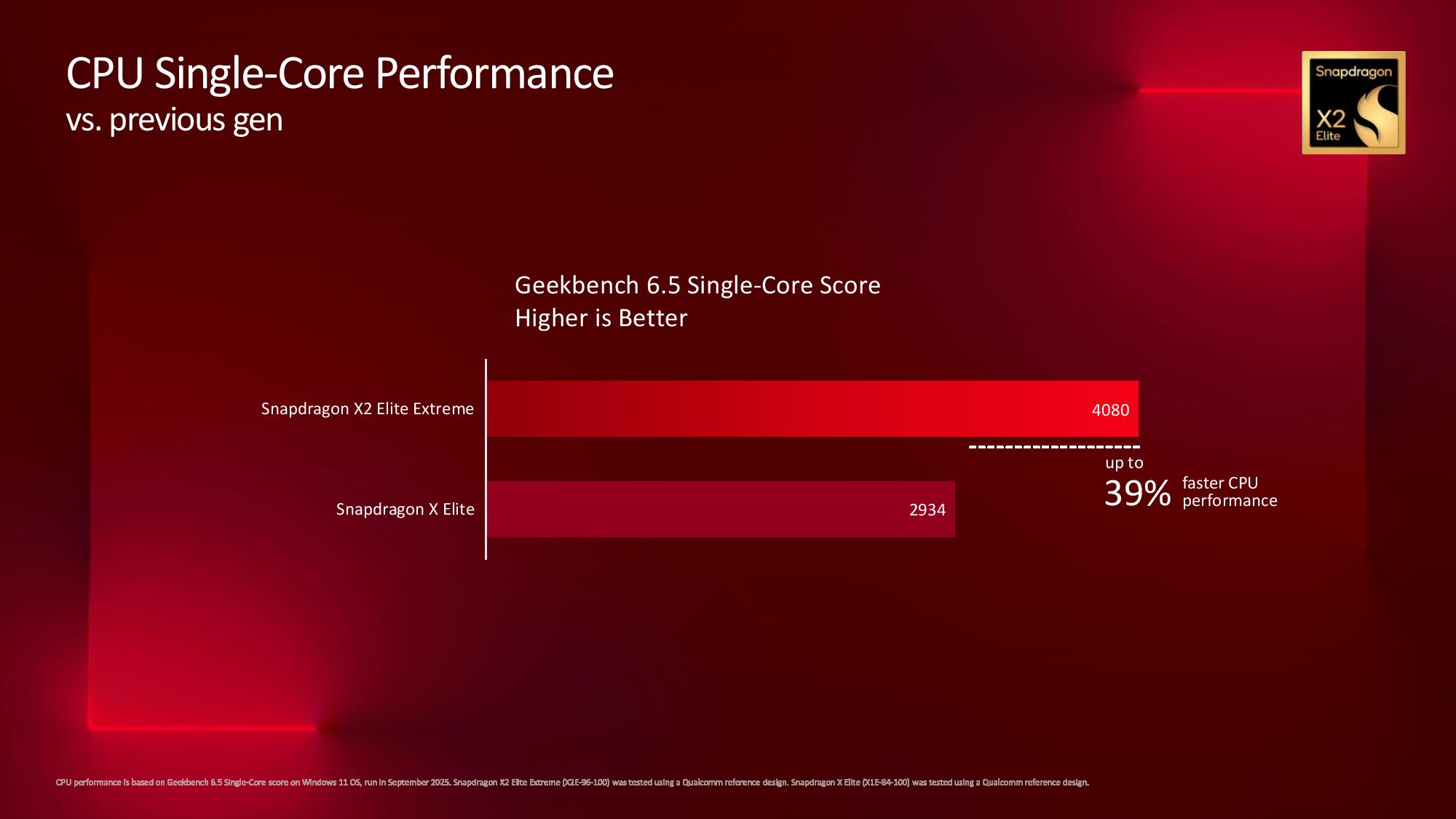
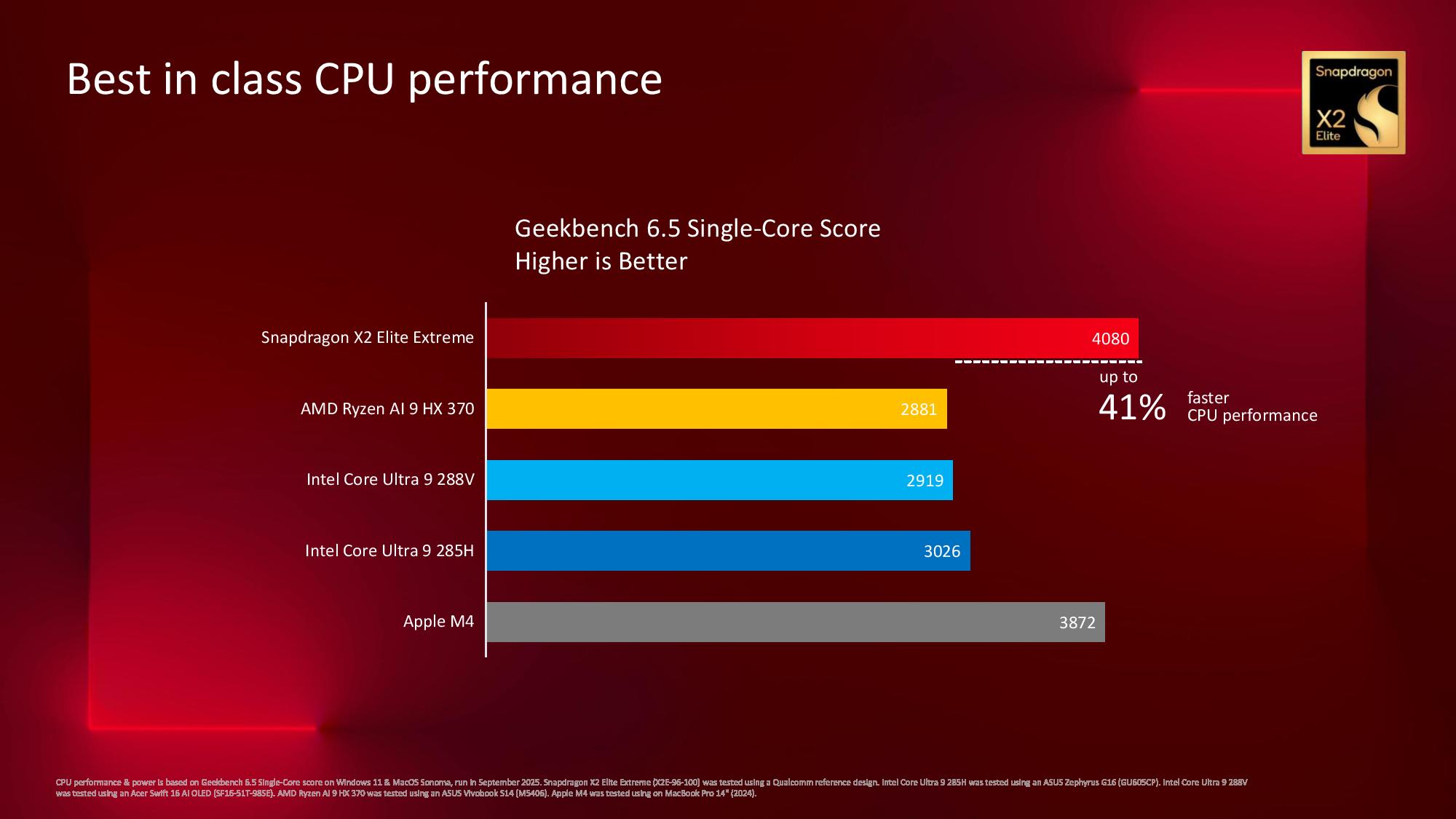
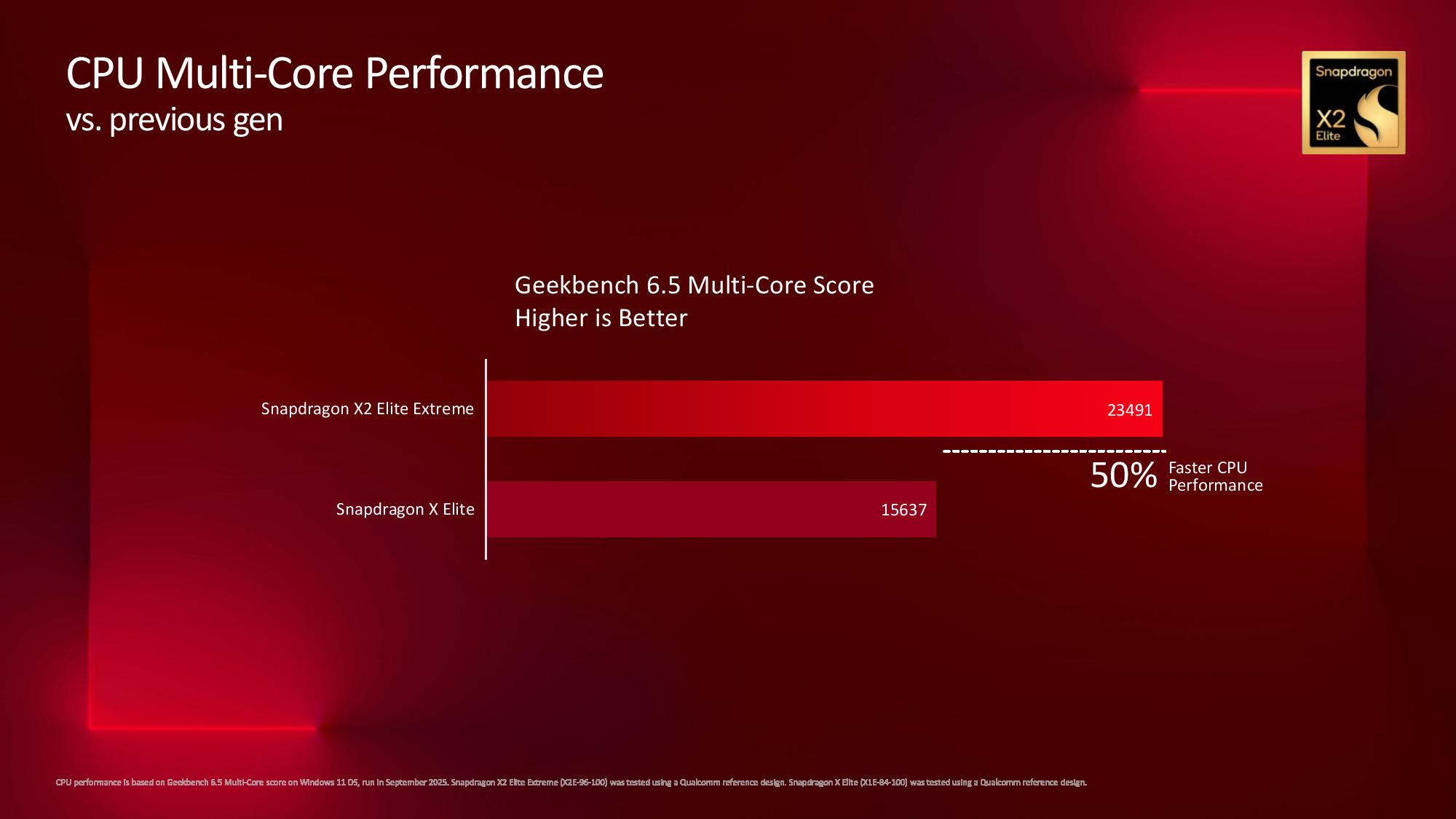
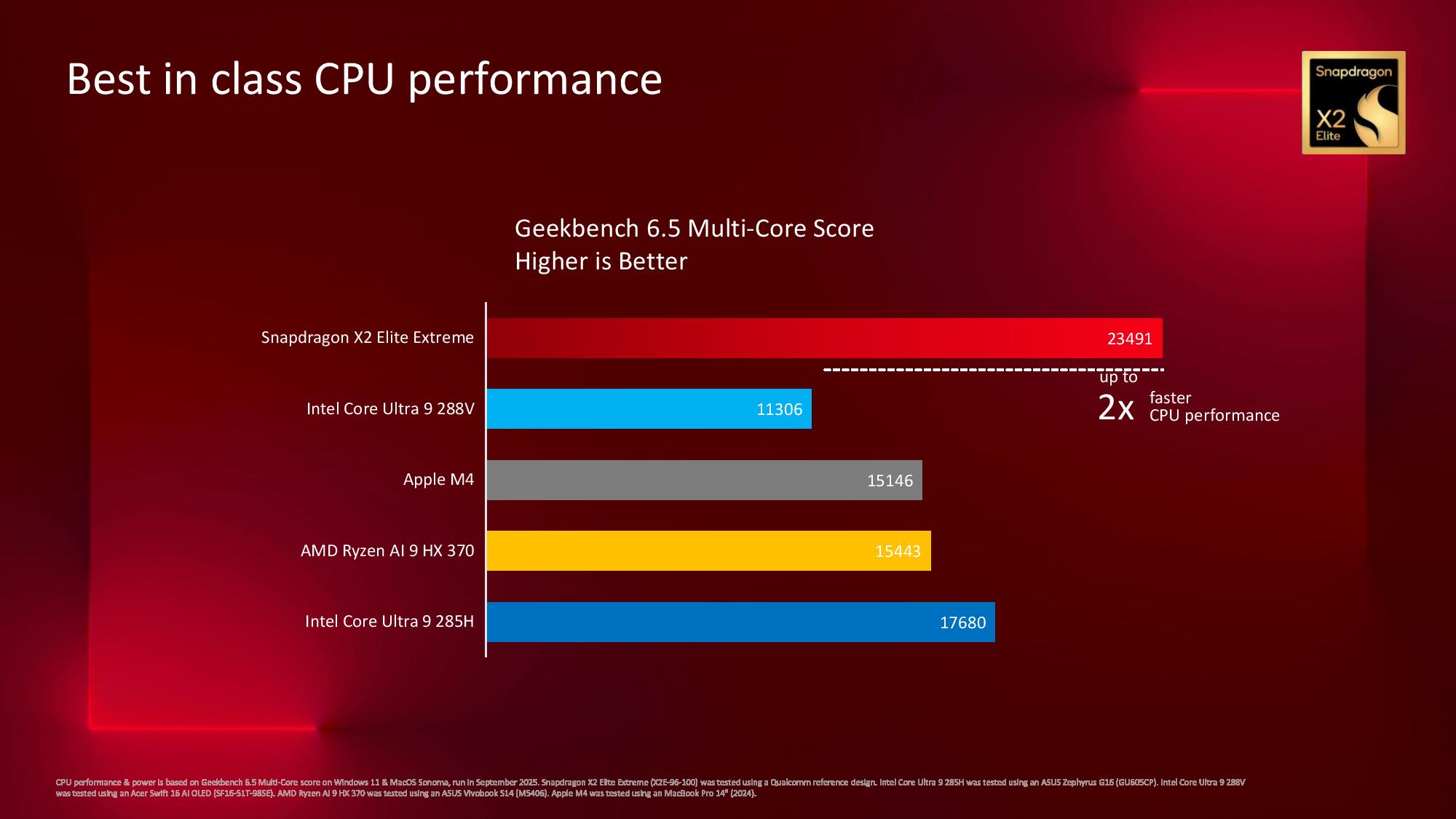
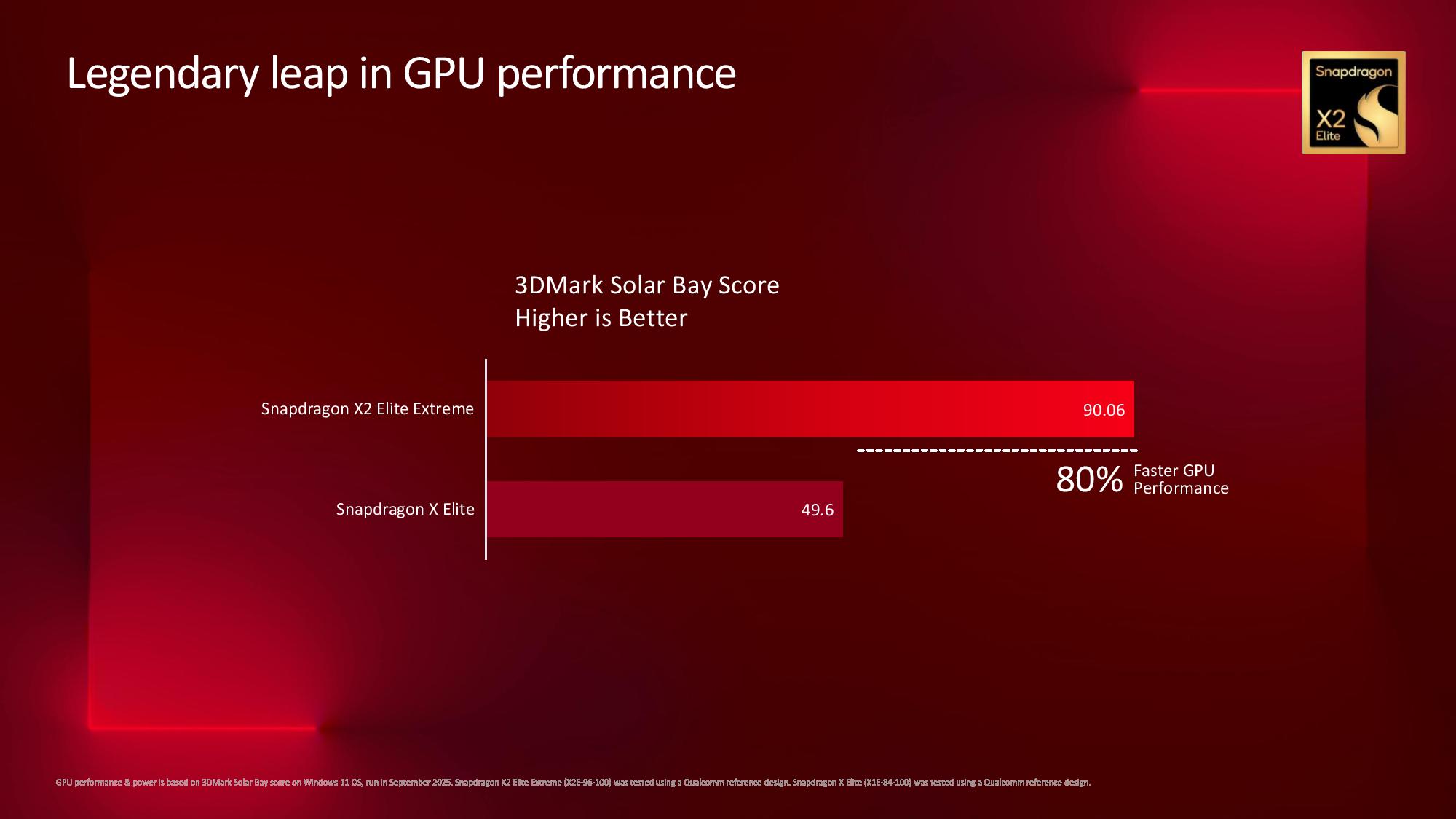
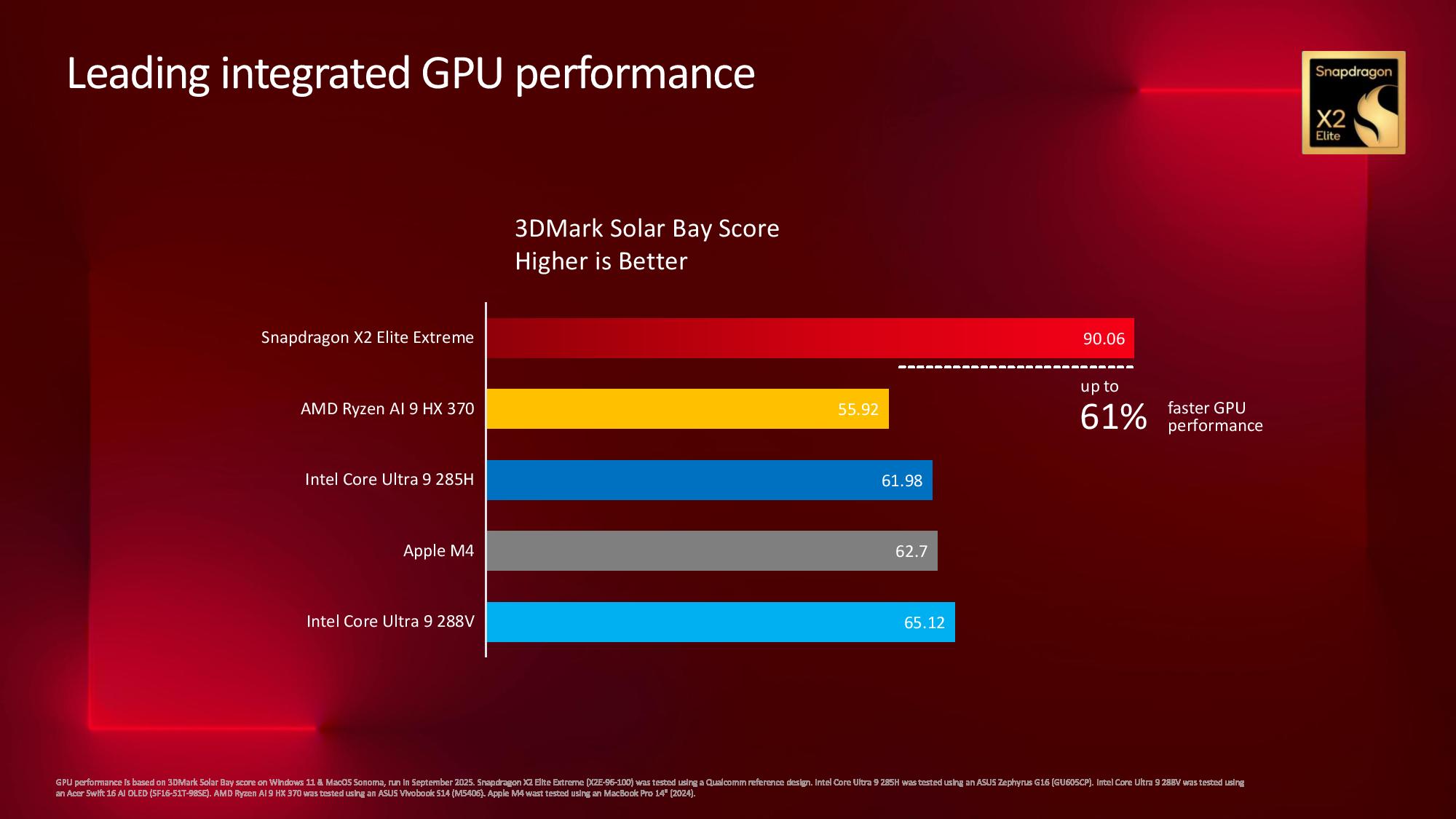
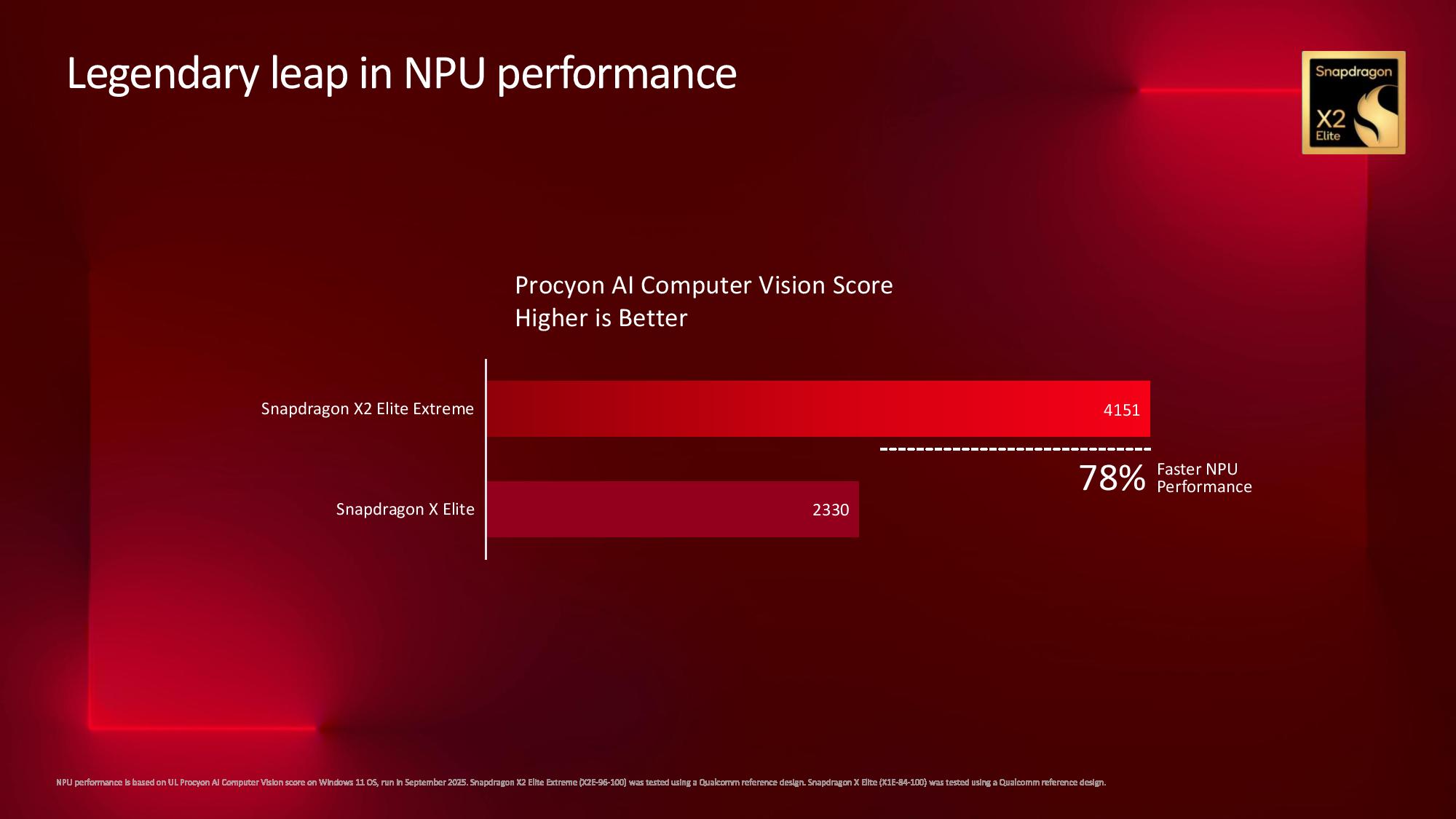
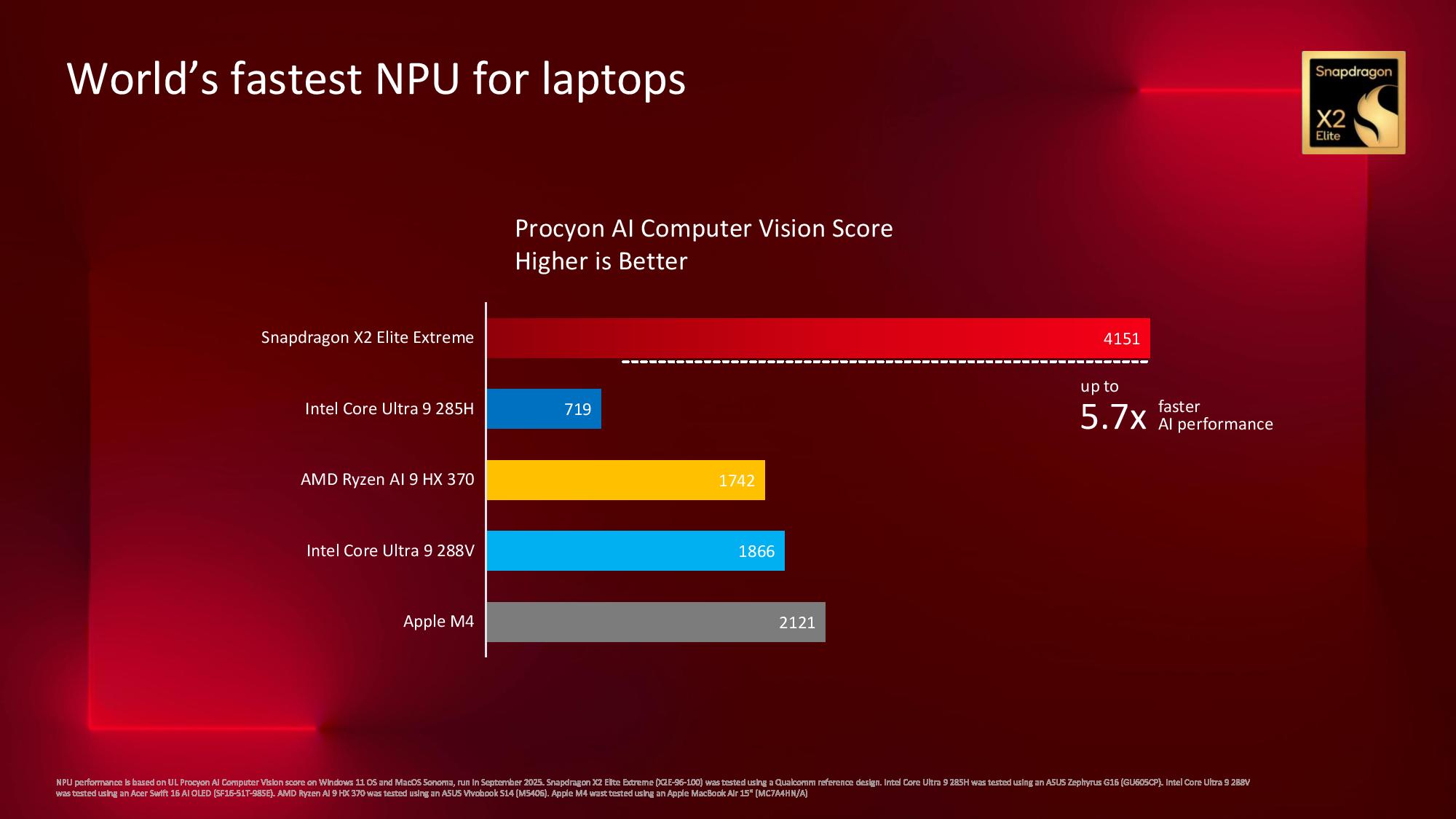
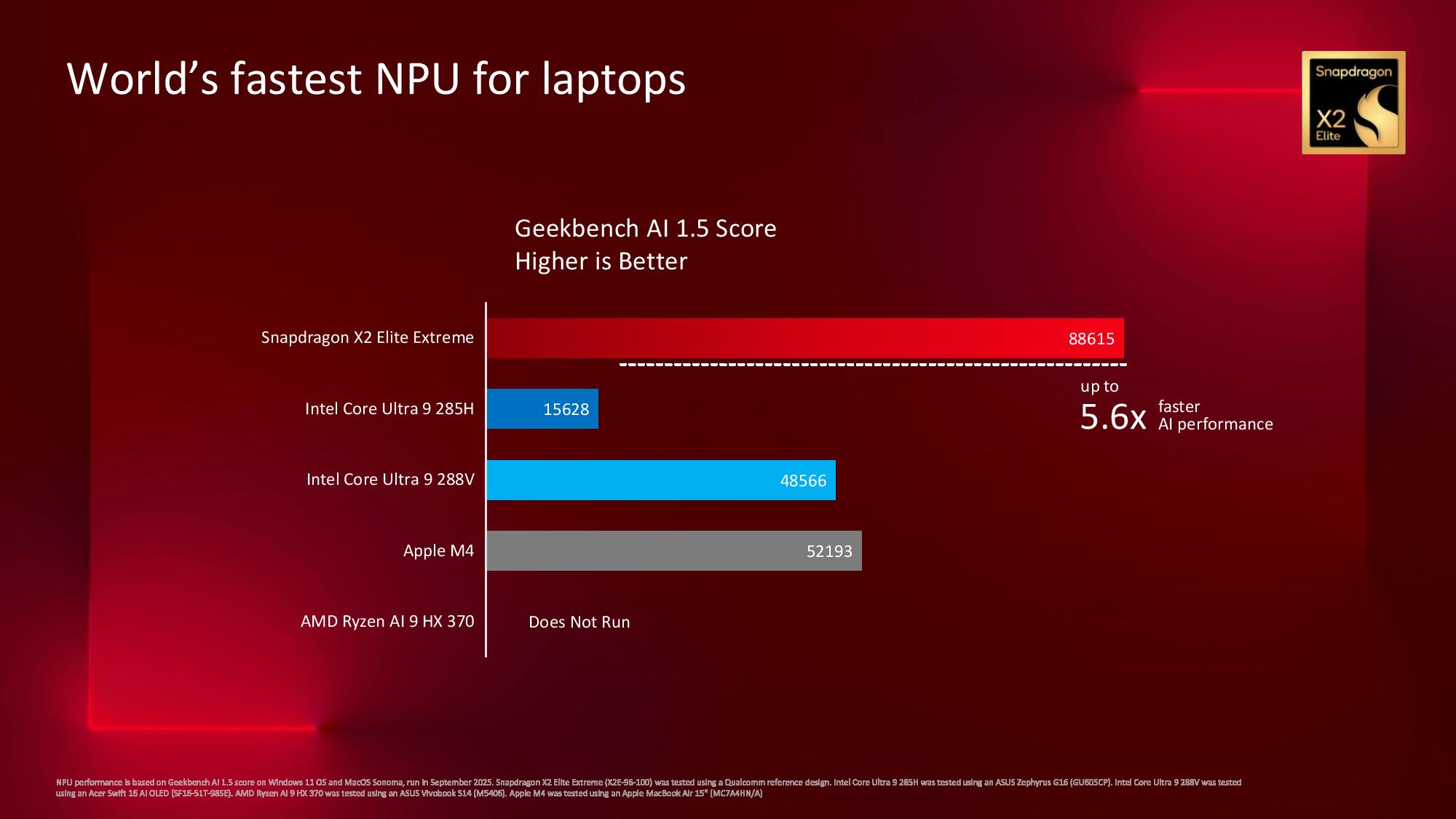
For CPU testing, Qualcomm used Geekbench 6.5. In single-core, the X2 Elite Extreme achieved a single-core score of 4,080, beating the previous-gen Snapdragon X Elite (X1E-84-100, the top-end consumer chip) by 39%. Qualcomm also shows it beating the AMD Ryzen 9 HX 370 (2,881), Intel Core Ultra 9 288V (2,919), Intel Core Ultra 9 285H (3,026), and Apple M4 (3,872, tested in an actively cooled MacBook Pro).
In multi-core testing, the Extreme earned a score of 23,491, beating the old X Elite at 15,637 — a 50% increase. Qualcomm says this is up to twice as fast as the Core Ultra 9 288V (11,406). Here, the Core Ultra 9 285H took second place at 17,680.
Note that the new X2 Elite Extreme now supports Arm Scalable Matrix Extensions (SME) instructions, which accelerate matrix operations commonly found in AI and HPC-class workloads. However, this extension isn't commonly used in standard desktop applications. The new Geekbench 6.5 features newly added support for SME, which contributes to some of these large performance gains in this benchmark.
Qualcomm measured the GPU with 3DMark Solar Bay ray tracing benchmark, which uses the Vulkan 1.1 graphics API (except on macOS, where it uses Apple's Metal). This is generally not a test we see run on integrated graphics. So, Qualcomm is likely either attempting to make a statement about its chip’s gaming abilities or cherry-picking a test where it looks particularly impressive (my money is on a bit of both). Regardless, the X2 Elite Extreme earned a score of 90.06, 80% faster than last generation, and, per Qualcomm's testing, up to 61% faster than competitors (the AMD Ryzen 9 AI HX 370 scored 55.92). Intel's Core Ultra 9 288V was the closest competitor.
For NPU testing, Qualcomm used Procyon AI Computer Vision, where the Hexagon silicon earned a score of 4,151, 78% faster than the X1E-84-100. Qualcomm also says this score is as much as 5.7 times faster than the NPU in the Core Ultra 9 285H, and also beat the rest of the field.
Qualcomm ran a second AI test using Geekbench AI 1.5, with the Extreme earning a score of 88,615. While that's far faster than the Intel Core Ultra 9 285H, the AMD Ryzen AI 9 HX 370 did not run the test.
In short, the X2 Elite Extreme looks technically capable of beating pretty much every mobile chip currently on the market, often by a significant margin. But again, keep in mind that these benchmarks were chosen by Qualcomm, running in their own custom-designed chassis. So it’s fair to assume that we are seeing best-case results.
Timing will also be important. Qualcomm has only stated that we should see X2 Extreme devices in the first half of 2026, which is a fairly wide window and as far as eight months in the future. Depending on when they arrive on shelves, they may be competing with improved next-gen designs from Apple, Intel, and AMD, which, at the very least, are likely to make these current comparisons look a little less impressive.
Price will also be a serious consideration, as Qualcomm representatives told us that we should expect X2 Elite Extreme should arrive at a price tier higher than the range we saw last year with the launch of its first-gen Snapdragon X chips. In short, X2 Extreme systems will probably sell for significantly more than $1,000. The lesser X2 Elite chips will almost certainly be more popular. But then again, if the company can maintain an impressive performance lead over its next-gen competition, there will always be those willing to pay extra for the best performance possible.







